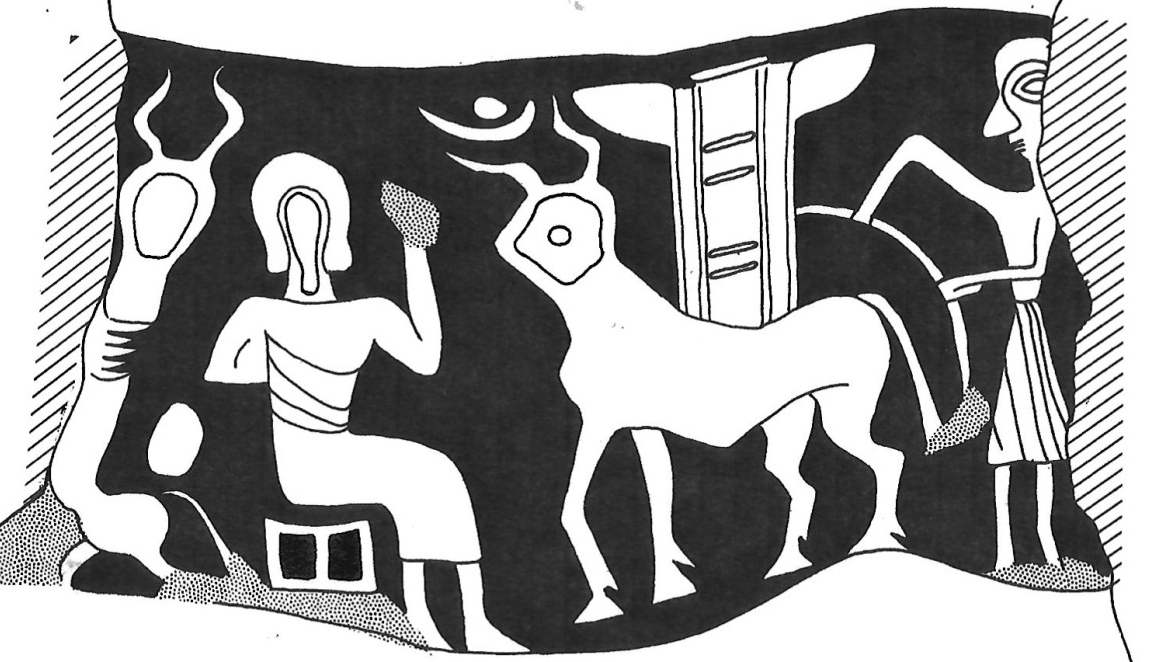One of the main characteristics of this style is the way in which the heads and bodies of both humans and animals are depicted.
All the human figures, as well as the animals, have full bodies, often with relatively wide spaces between the figures. The human torsos can be triangular in shape but the triangles are full and attached to other parts of the human body so that the triangle is not emphasized, see for example A6.103 and A5.137.
In the A6.103 example the triangles are emphasized but the figures are overlapping as the human standing in front of the bull. Otherwise, in this style the figures are for the most part not overlapping but are placed with space between them (as in A5.137).
The figures can sometimes have a size mixture, depicting large and small figures in the same composition. In the example A6.103 there are different figure sizes as in the two small animals above the larger figures. This and overlapping figures are rare in this style so that neither of these aspects is characteristic for the Dotted Eye Style but shows the variation that can be found in it.
|
 A6.103
A6.103
 A5.137
A5.137
|